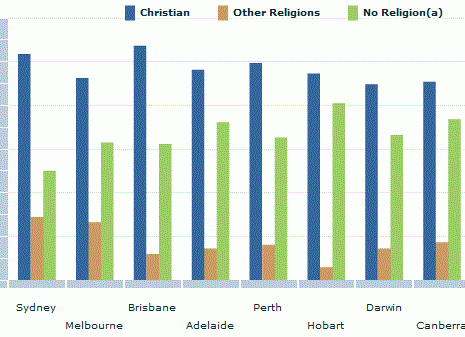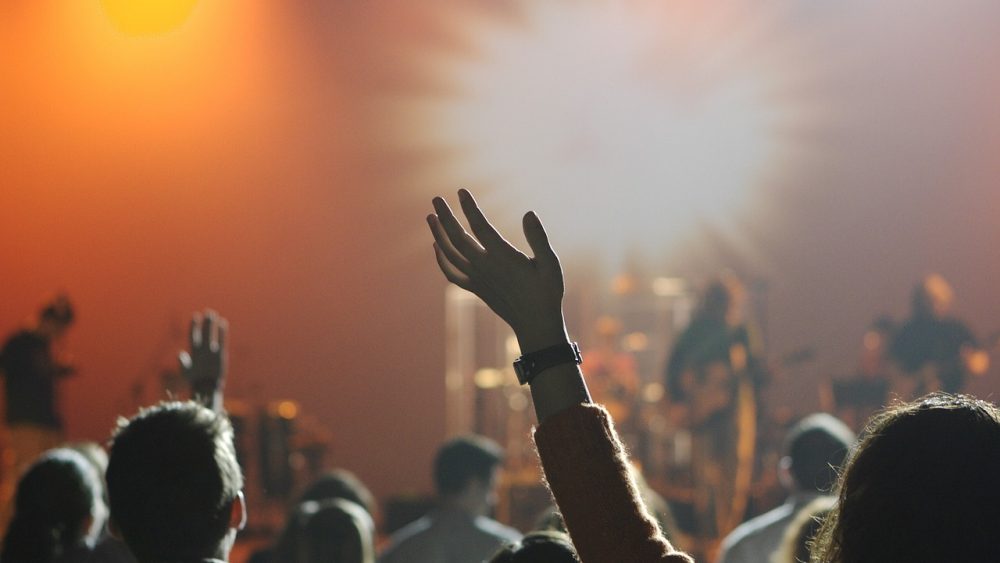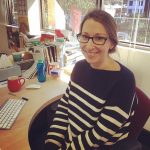Revealed: the most Christian places in Australia
You’ll never guess what’s number one
Brisbane and Sydney are battling for the honour of being the most religious city in Australia, according to an analysis of the 2016 census.
Fifty-four per cent of Brisbane residents and 52 per cent of Sydney-siders identified as Christian in the 2016 census, which was higher than in any other capital city. While Brisbane has more people who identify as following a Christian religion, Sydney edges ahead if you add in people who follow “other religions.” By that measure, Sydney is the most devout city: 24.6 per cent of the city’s residents described themselves as having no religion, which was 5 percentage points lower than the national figure.
The places with the most people calling themselves Christian were far from the main cities.
The proportion of Christians dropped in capital cities nationwide, with an average of only one in two Aussies identifying as Christian (52.1 per cent in 2016, down from 61 percent in 2011 and 88.2 per cent in 1966).
When analysed by council areas, central Brisbane held up well with 50.22 per cent identifying as Christian, Adelaide city recorded 30.91 per cent, Perth 32.96 per cent, Hobart 37.48 per cent and Darwin 45.22 per cent.
Hobart was the least religious capital with four out of ten people marking the no-religion box in the 2016 census, followed by Canberra (36.2 per cent) and Adelaide (35.6 per cent).
Meanwhile, the places with the most people calling themselves Christian were far from the main cities. Leading the list were small indigenous settlements in northern Queensland: Palm Island (88.52 per cent), Wujal Wujal (88.67 per cent) and Yarrabah (87.93) per cent, closely followed by Hope Vale (86 per cent) .
The least Christian council areas in Sydney included Sydney City (29.01 per cent), Waverley (34.12) and the inner west (39.67); in Melbourne: Melbourne City had only 24.48 per cent of people calling themselves Christian while Port Philip’s figure was 34.21 per cent.
The settlement pattern of migrants was partly responsible for the Bible belt moving to the southwest of Sydney from its traditional home in the city’s northwest.
Ruth Powell, director of National Church Life Survey Research, which studies religion in the community, told Eternity that religion remains a stronger part of people’s identity in ethnic groups other than those of Anglo heritage.
“If you want to find people who say they’re religious, you find them in higher proportions in south-west Sydney.” – Ruth Powell
The highest proportion of people identifying themselves as religious is in a band of suburbs stretching through the council areas of Liverpool, Fairfield, Cumberland and Canterbury-Bankstown, where the population includes large groups of Lebanese, Pacific Islanders and Filipinos. As a result, Catholic, Maronite Christian and Orthodox churches dominate the area rather than Protestant.
“The data is clear. If you want to find people who say they’re religious, you find them in higher proportions in south-west Sydney,” says Powell.
“And we’re not just talking first-generation; you have second and third-generation Islanders there. If you’re a Pacific Islander, church is a massive part of your life.”
Suburbs that have historically enjoyed a higher proportion of Christians are losing believers. In the five years since the 2011 census, the Christian population of The Hills district, in north-west Sydney and home of Hillsong church, dropped 18.5 per cent. In that area, the share of people with no religion has grown from one in eight in 2006 to one in five.

Religious affiliations within each capital city, 2016 ABS
Email This Story
Why not send this to a friend?



